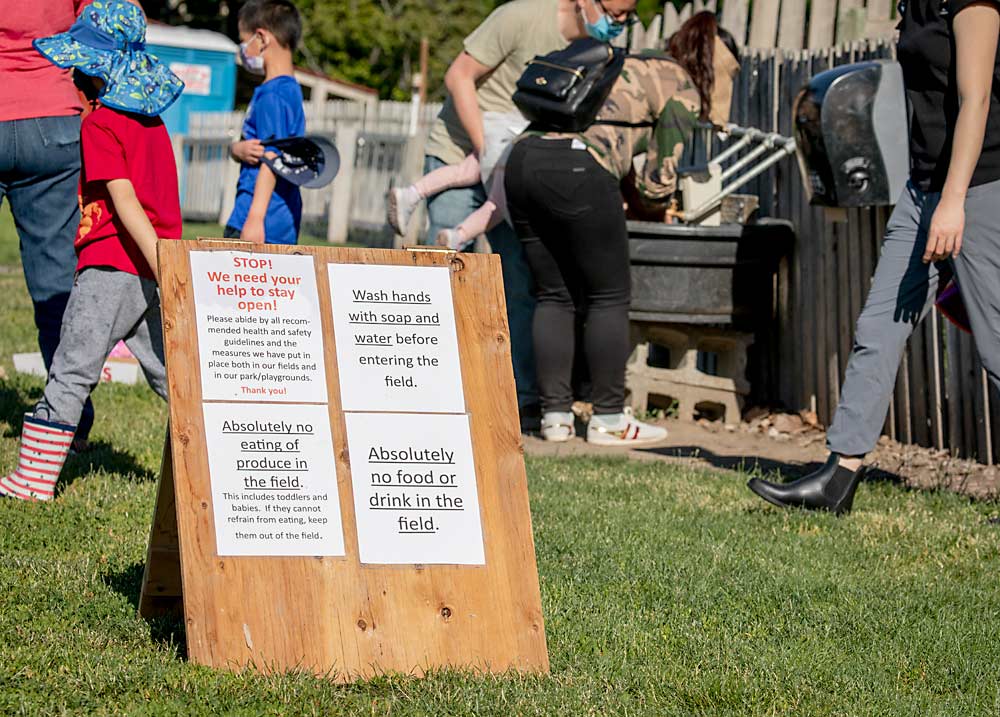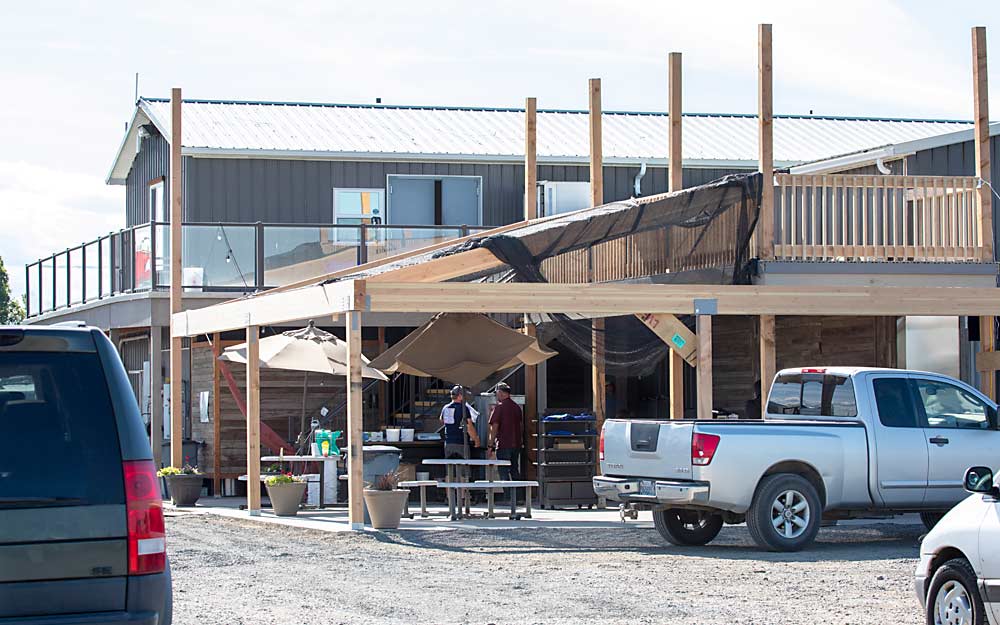
After months of coronavirus-related lockdown, people were eager to visit U-pick farms for the first fruits of the summer. The arrival of those first customers offered a chance for U-pick operations across the country to test their new safety measures before bigger crowds arrive in the fall.
State agriculture departments, university extension agencies and local health departments have published a plethora of safety guidelines for U-pick farms to borrow from. The recommendations, focused on keeping both staff and customers healthy, can be boiled down to a few general points:
—Do not enter the premises if sick or not feeling well.
—Maintain social distancing as much as possible.
—Wash your hands frequently, especially before entering picking areas.
—Wear a mask, especially indoors.
—Frequently clean and sanitize equipment and surfaces.
Exact practices varied by region, farm and crop, but all fit within those general guidelines.
U-pick farm owners were eager to adopt additional safety practices, said Laurel Dunn, assistant professor and extension specialist with the University of Georgia.
“No farm wants to be the center of any outbreak,” Dunn said. “It used to be food safety outbreaks they worried about. Now it’s coronavirus.”
Perhaps the most crucial practice is clear communication. U-pick farms should be upfront with customers about their new expectations, but relay the message in a way that makes them feel welcome, said Elizabeth Higgins, a Cornell University extension specialist based in New York’s Hudson Valley.
Picking fruit represents a particularly popular pastime in the Hudson Valley region, and large, nearby populations typically “slam” U-pick farms in summer and fall, Higgins said.
Things were uncertain in June, but Bowman Orchards, a U-pick farm near Albany, was forging ahead with strawberry and blueberry season. Owners Kevin and Martha Bowman required customers and staff to wear masks and assigned groups to specific rows. They were no longer driving customers to the strawberries in a trolley, instead making them drive in their own vehicles. And instead of allowing customers to fill their own containers and charging them by the pound, they provided standard-sized containers that customers paid for beforehand, Kevin Bowman said.
“We’re hoping requiring masks will mean less consuming of berries while out in the field,” he said with a chuckle. “For anybody who has U-pick berries, that’s an issue.”
They were testing the new requirements during berry season. If needed, they planned to make adjustments for “the big fall push,” Bowman said.
On the other side of the country, at Bill’s Berry Farm in Grandview, Washington, owners Julie and Bill Michener put out signs asking customers to help the farm stay open by following its safety guidelines, which included handwashing and not allowing eating or drinking in the field. The U-pick farm, which was offering cherries, blueberries and raspberries in mid-June, has a big local following. Customers show up from as far away as Seattle, a drive of more than three hours, Julie Michener said.

“The majority of people have been helpful,” she said. “They’re willing to do everything they can to make it possible for us to stay open. They want life to get back to normal.”
Before the U-pick season opened in Indiana, some farm owners had expressed concerns about how to enforce the new safety guidelines. How should they handle difficult patrons? Run them off the farm?
Fortunately, it didn’t become an issue, said Bruce Bordelon, professor and small fruit specialist with Purdue University.
“There was an overwhelmingly positive response on the consumer side,” Bordelon said. “People were happy not to be cooped up.”
Some of the new safety practices could be adopted permanently, even after the coronavirus crisis passes. Carter Mountain Orchard in Virginia is one of many U-pick farms that started selling fruit by volume this year, instead of by weight. Cynthia Chiles, one of the owners in the family-owned business, thinks that will become a new norm for them.
“We very likely will continue to do some of these measures,” she said. “We always take pride in keeping our facility clean, but now we’re sanitizing everything once an hour. I don’t see that changing for a long time.”
The Chiles family owns three farm market and U-pick orchard operations around Charlottesville, Virginia. Together, the three farms draw up to 250,000 customers in a normal year, employing up to 125 U-pick staff during peak season. Since the pandemic started, they’ve been closely watching other farms and sharing ideas with them. Farms farther north have been calling to figure out what works and what doesn’t. The networking has been extremely helpful, Chiles said.
One of the first changes the Virginia orchards made: limit groups to two pickers, which allowed more groups to enter the fields. And for the first time, they assigned each group to a specific strawberry row, skipping every other row to keep groups at least 10 feet apart. They required handwashing before and after picking, and they provided lots of hand sanitizer and washing stations. They also spaced the picnic tables farther apart. They required masks for inside staff but kept them optional for employees who work outside. Because masks get uncomfortable in the heat, they scheduled shorter shifts so employees could take them off during breaks, she said.
The new methods haven’t been cheap. They’ve gone through “copious amounts” of hand sanitizer, the price of which has “gone through the roof,” she said, and they’ve bought stanchions, barriers and stickers and spent a lot of money on new signage.
“The flip side is that if we didn’t spend that money, we wouldn’t be open right now,” Chiles said. “It’s been a bit of a scary year, but the support we’ve gotten from customers has been overwhelming. People are grateful we’ve been open.” •
—by Matt Milkovich






Leave A Comment